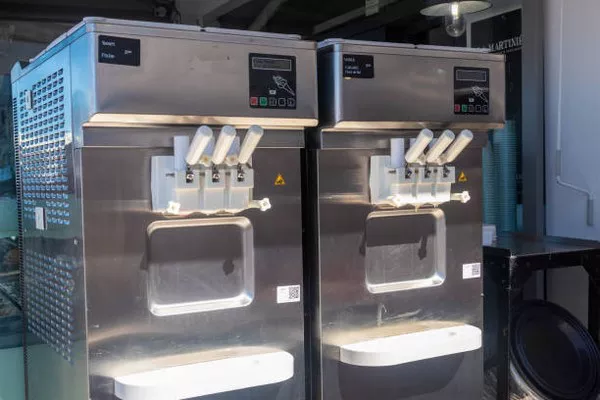As the need for reliable power sources continues to be a priority, especially in regions prone to power outages or during emergencies, the importance of selecting the appropriate generator becomes paramount. Central air conditioning systems are significant energy consumers in residential and commercial spaces. Therefore, understanding the power requirements to operate them during power disruptions is essential. In this article, we delve into the considerations and calculations necessary to determine the ideal generator wattage to efficiently run central air conditioning systems.
Understanding Central Air Conditioning Systems:
Central air conditioning systems are integral to maintaining comfortable indoor environments, particularly in regions with extreme temperatures. These systems consist of various components, including compressors, condensers, evaporator coils, and fans, all of which require electricity to function.
Determining Power Consumption:
The power consumption of a central air conditioning system primarily depends on its size, efficiency, and the specific components installed. The unit of power consumption is typically measured in watts (W) or kilowatts (kW). To determine the wattage requirements for running a central air conditioner, one must consider the following factors:
Size of the Air Conditioner: The size of the central air conditioning unit is measured in British Thermal Units (BTUs) per hour. Larger units with higher BTU ratings consume more power. Manufacturers typically provide the BTU rating on the unit or in the product specifications.
Efficiency Rating (SEER): Seasonal Energy Efficiency Ratio (SEER) indicates the efficiency of the air conditioner. Higher SEER ratings denote greater energy efficiency. More efficient units generally require less power to operate.
Starting Surge: Central air conditioners often require a surge of power to start up, known as the starting surge or starting watts. This initial surge can be significantly higher than the running wattage and must be accounted for when selecting a generator.
Calculating Wattage Requirements:
To calculate the wattage requirements for running a central air conditioner, follow these steps:
Determine the BTU Rating: Identify the BTU rating of the central air conditioning unit. This information is typically found on the unit’s nameplate or in the product documentation.
Calculate the Running Wattage: Multiply the BTU rating by the unit’s efficiency rating (SEER) to obtain the running wattage. The formula is as follows:
Running Wattage=BTU Rating×SEER
Account for Starting Surge: Determine the starting surge or starting watts required by the air conditioner. This information may be provided by the manufacturer or can be estimated based on the unit’s specifications.
Total Wattage Requirement: Add the running wattage to the starting surge to obtain the total wattage requirement for the central air conditioner.
Example Calculation:
Let’s consider a central air conditioning unit with a BTU rating of 24,000 BTU/hour and a SEER rating of 16.
Running Wattage=24,000 BTU/hour×16 (SEER)=384,000 watts
If the starting surge is estimated to be 1.5 times the running wattage:
Starting Surge=1.5×384,000=576,000 watts
Therefore, the total wattage requirement for this central air conditioner is 384,000+576,000=960,000 watts.
Selecting the Right Generator:
Once the total wattage requirement for the central air conditioner is determined, selecting an appropriate generator becomes the next step. Generators are available in various sizes and capacities, ranging from portable units to standby generators for residential or commercial use.
When choosing a generator to power a central air conditioning system, consider the following factors:
Wattage Capacity: Ensure that the generator’s wattage capacity exceeds the total wattage requirement of the air conditioner. It’s advisable to choose a generator with some additional wattage capacity to accommodate other essential appliances or equipment.
Type of Generator: Portable generators are suitable for smaller residential applications, while standby generators are more appropriate for larger homes or commercial buildings. Standby generators are often connected directly to the electrical system and can automatically start during power outages.
Fuel Type: Generators are powered by various fuels, including gasoline, diesel, propane, and natural gas. Choose a fuel type that is readily available and convenient for your needs.
Transfer Switch: Installing a transfer switch is essential for safely connecting the generator to the central air conditioning system and other electrical circuits in the building. A transfer switch prevents backfeeding electricity into utility lines, ensuring the safety of utility workers and preventing damage to the generator.
See also How Does Fuelless Generator Work? All You Need to Know
Conclusion:
Selecting the right generator wattage to power a central air conditioning system requires careful consideration of the air conditioner’s size, efficiency, and starting surge. By calculating the total wattage requirement and choosing a generator with adequate capacity, homeowners and businesses can ensure uninterrupted cooling during power outages or emergencies. Additionally, consulting with a qualified electrician or generator dealer can provide valuable guidance in selecting the most suitable generator for specific needs and requirements. Investing in a reliable generator not only enhances comfort but also contributes to preparedness and resilience in the face of unexpected power disruptions.

